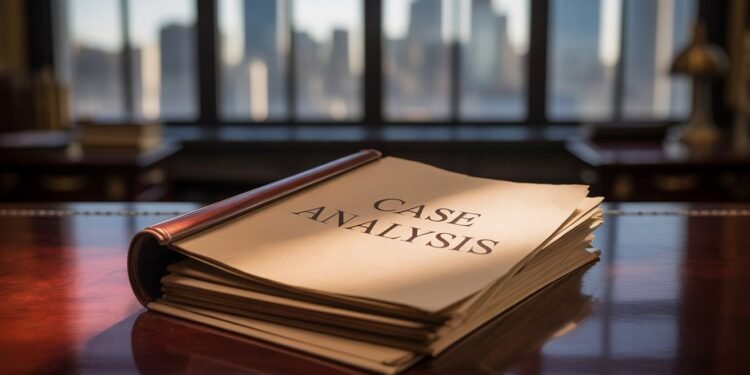Om Pandey, LLB, Techno India University, Kolkata, West Bengal
FACTS OF THE CASE
In the case of N.L. Rajah v. Securities and Exchange Board of India (SEBI), decided on February 17, 2022, the petitioners challenged show-cause notices issued by SEBI concerning the issuance of Global Depository Receipts (GDRs) by their company. The petitioner in W.P. No. 19117/2019 was encompassed within the parameters of a previous order but had not filed any separate petition before the Court. The petitioners contended that the Securities Appellate Tribunal (SAT) lacked jurisdiction to decide the issues raised at this juncture [1].
ISSUES FRAMED IN THIS CASE
-
Whether the SAT has the jurisdiction to decide the issues raised by the petitioner?
-
Whether the Court should grant relief by quashing the show cause notice issued to the petitioner?
-
Whether non-executive directors, who were not involved in the company’s daily affairs, can be held liable for alleged irregularities in the issuance of Global Depository Receipts (GDRs)?
-
Whether SEBI’s delay of fourteen years in initiating action against the petitioners was justified, and if such a delay prejudiced their right to a fair defense?
-
Whether the petitioners could directly approach the High Court under Article 226 of the Constitution, or if they should have exhausted the alternative remedy of appealing to the Securities Appellate Tribunal (SAT)?
CONTENTIONS OF THE PETITIONER
In N.L. Rajah v. Securities and Exchange Board of India (SEBI), the petitioners, who were non-executive directors of a company, challenged the show-cause notices issued by SEBI regarding alleged irregularities in the issuance of GDRs. They argued that they were not involved in the company’s day-to-day management at the time of the issuance and that SEBI’s initiation of proceedings after a fourteen-year delay was arbitrary. The petitioners emphasized their lack of any continuing association with the company and claimed that reopening the matter after such a long time undermined their ability to mount a fair defense [2].
CONTENTIONS OF THE RESPONDENT
The respondent, SEBI, presented several contentions in the case. Firstly, it questioned the validity of the arbitration award cited by the appellant, asserting that it was ineffective as it merely concluded that there were no disputes, leading to termination. SEBI suspected the arbitration was collusive and stressed that independent documentary evidence supported its case. Secondly, in response to the appellant’s argument that cross-examination had been unjustly denied, SEBI clarified that the request pertained only to specific partners of the broker firm and not others whose statements were used. SEBI argued that cross-examination is not a mandatory component of natural justice in all situations and must be assessed on a case-by-case basis. Lastly, SEBI asserted its authority under Section 11B of the SEBI Act to issue directions, including barring individuals from holding public positions in capital market institutions. It emphasized that such powers had been affirmed by various High Courts and were necessary to safeguard the interests of investors. SEBI highlighted that the appellant’s continued involvement in securities-related companies after resigning from his previous position justified regulatory action based on his past conduct [3].
JUDGMENT
The Madras High Court, in its judgment dated February 17, 2022, declined to quash the show-cause notices issued by SEBI against the petitioners. The Court acknowledged the petitioners’ argument that they were non-executive directors with no role in daily operations during the GDR issuance but pointed out that they were part of the audit team that finalized the company’s financials during the relevant period, indicating a degree of involvement warranting further inquiry. On the issue of delay, the Court held that SEBI’s action was not unreasonable since it only discovered the irregularities during the investigation of similar cases in other companies. The Court underscored that the petitioners had an alternative remedy available under the SEBI Act by appealing to the Securities Appellate Tribunal (SAT). Since the facts of the case were disputed and required detailed examination, the Court held that it was inappropriate to entertain the writ petition at this stage. Thus, the High Court permitted the petitioners to respond to the show-cause notice and raise all contentions therein, reserving their right to appeal to SAT as necessary [4].
IMPACTS OF THE CASE
The case of N.L. Rajah v. SEBI had far-reaching implications for investor protection, regulatory oversight, and the enforcement of securities laws in India. It reinforced SEBI’s duty to act diligently in safeguarding the interests of investors and ensuring accountability among market participants. The judgment emphasized that regulatory bodies must maintain transparency and fairness in their proceedings, which in turn strengthens investor confidence and market integrity. The decision also reaffirmed the judiciary’s role in reviewing the actions of regulatory authorities without unduly interfering in administrative functions, ensuring a balanced relationship between judicial oversight and regulatory autonomy. Furthermore, the case highlighted the significance of non-executive directors’ responsibilities in corporate governance and their potential accountability in instances of financial irregularities, thereby promoting more diligent oversight in corporate boards [5].
CONCLUSION
The Court permitted the petitioners to present all points raised in the writ petition in their explanation to the show-cause notice but refrained from quashing the notice itself, stating that such judicial intervention was unwarranted at this stage. The Court found that the petitioners’ involvement in finalizing audit reports indicated a level of responsibility that justified SEBI’s inquiries. It also held that SEBI’s delay was not unjustified as the GDR issue came to light during unrelated investigations. The Court advised the petitioners to pursue remedies before the Securities Appellate Tribunal (SAT) rather than directly approaching the High Court under Article 226 of the Constitution.
RECOMMENDATION
Petitioners should prepare a comprehensive explanation addressing the show-cause notice, ensuring all pertinent arguments—such as the delay in proceedings, lack of involvement in daily operations, and absence of direct wrongdoing—are included to strengthen their position before the Securities Appellate Tribunal (SAT).
References
[1] N.L. Rajah v. SEBI, W.P. No. 19117 of 2019, Madras High Court, Judgment dated 17 February 2022.
[2] Securities and Exchange Board of India Act, 1992, Section 11B – Powers of the Board to issue directions.
[3] Clariant International Ltd. v. SEBI, (2004) 8 SCC 524 – Scope of natural justice in SEBI proceedings.
[4] Kanaiyalal Lalchand Sachdev v. State of Maharashtra, (2011) 2 SCC 782 – Exhaustion of alternative remedies before approaching writ courts.
[5] SEBI Handbook of Statistics 2021-22, Securities and Exchange Board of India – Regulatory actions and timelines.



